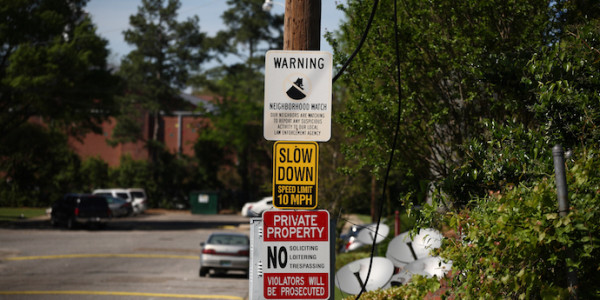Moving. Just the word can evoke a mix of emotions—excitement for the new adventure ahead, mixed with a twinge of apprehension about the process itself. Figuring out how to move long distance adds an extra layer of complexity and anticipation. With careful planning, creativity, and a whole lotta patience, your long distance move can be smooth sailing. Let’s lay out some tips on how to make your relocation a success.
- Plan and Organize
- Declutter and Downsize
- Create a Packing List
- Gather Packing Supplies
- Don’t Overpack
- Choose Plastic Boxes Over Cardboard Boxes
- Hire Professionals (if budget allows)
- Pack an Essentials Box
- Embrace the Chaos
Tip #1: Rome Wasn’t Built in a Day
And, you should expect that your move won’t be either, especially a long distance one! The key to a stress-free long distance move? Time. Start planning and organizing well before your intended moving date. Get a moving checklist and give yourself ample time to sort your belongings, pack them up securely, and coordinate logistics.
Aim to start the process at least two to three months ahead of the big day for a smooth ride. (Moving with kids? Tack an extra week onto the timeline for each one.) Unless, of course, you enjoy the adrenaline rush of pure panic as you pack your entire life into boxes at the last minute – then, by all means, procrastinate away. (I broke out in a sweat just writing that!)
Tip #2: Downsize Like a Boss
Moving long distance presents the perfect opportunity to declutter and downsize. Take stock of your belongings and ask yourself, “Do I really need this?” Then into those keep, sell, donate, toss piles, and you’re well on your way to lightening your load, and making moving day that much easier and cheaper.
This is the moment to make Marie Kondo proud. Only those things that bring form, function, comfort and joy should start this new chapter alongside you. In previous moving installments here, I may have thrown my wife under the bus for having an extensive collection of black velvet paintings and an heirloom butter dish that she *ahem* had no idea was a butter dish, so now it’s my turn. During the downsize phase of my most recent move, I was forced to decided to part ways with a collection of empty tech boxes and what felt like a hundred ‘backup’ cords. Trust me; we don’t miss any of it.
Tip #3: Create a Packing List
Organization is key when it comes to packing for a long distance move. Create a detailed packing or inventory list to keep track of all your belongings. Categorize items by room or type to make unpacking easier. Think of it as your moving manifesto. A detailed packing list will prevent you from forgetting essentials and ensure that nothing gets left behind.
And, remember to be as specific as possible when labeling boxes. “Kitchen Stuff” won’t cut it when you’re scavenging for your coffee maker on day one. Bonus points for using creative labels like “Box 1 – Office – Stack of Regrets” for that pile of unsorted documents that’s simply going to shift from one home to the next for the rest of life. I kid! Now is the time to finally figure out what’s in that pile, invest in a file caddy, and log it into your inventory!
Tip #4: Wrap It Up
When you’re moving across states, tips like stocking up on the right supplies for the job, really go the distance. Invest in quality packing materials, like bubble wrap, packing paper, and blankets to cushion fragile items such as glassware, electronics, and artwork. If you’ve got a road trip ahead of you, remember to keep some items off of the moving truck and in your possession for safe keeping, including valuables, irreplaceable heirlooms, food, plants and pets!
Tip #5: Resist Any and All Urges to Overpack
Repeat after me: “I do not need to bring the entire contents of every junk drawer (cupboard and closet) in my home.” Since packing light is the key to maintaining your sanity during a move, the decluttering mantra is the backbone of not one, but two tips. That’s because when it comes to packing for a long distance move, finding the right balance is key. You need to pack light enough to make the move manageable, and avoid overpacking to the point of excess.
Now’s the time to consider the cost and effort involved in transporting each item and prioritize accordingly. Many items, like cleaning products and the contents of your pantry should be used up or donated prior to your move, to save on space and cost. With minimal investment, you can re-stock these items once you move in. Remember, less is more when it comes to long haul moves, and your back will thank you later.
Tip #6: Bins and Tubs Over Boxes, Always
While cardboard boxes may seem like the go-to (and more cost effective) choice for packing, consider the benefits of plastic tubs or bins for your long distance move. Lidded plastic bins are sturdy, stackable, reusable, more protective against moisture and pests, and won’t collapse under pressure like your willpower in front of a mid-move cold beer or chocolate bar.
If you choose clear plastic bins you also increase your chances of finding whatever it is you need in the moment, plus they double as post-move makeshift furniture while you’re sorting life out. Nothing says move like balancing a dinner-filled paper plate on your knees while sitting atop a plastic bin.
Tip #7: Leave the Heavy Lifting to the Pros
Professional movers have the skills, muscles, and probably a few tricks (or moving straps) up their sleeves to make your move a breeze. When it comes to long distance moves, if the budget allows, enlisting the help of professional movers can be a game-changer. Hiring professionals will save you time, effort, and stress, diverting your attention away from the heavy lifting, and putting it back on making sure you and your family get safely from point A to B.
Just don’t be surprised if they show up wearing capes. I watched two disastrously strong men (okay, disastrous only for my self-esteem) pull a very tall refrigerator up three flights of narrow stairs on a dolly that looked like it had no business being on scene. When the pros show up, simply stand back and watch these superheroes save the day!
Tip #8: Keep Essentials and Documents Near
As you pack up your belongings, set aside any and all essentials and important documents. These should include items such as toiletries, a change of clothes, medications, important paperwork, irreplaceable items and valuables. Keep these in your moving essentials box that will remain accessible to you throughout your move.
These essentials will be your lifeline during moving day mayhem, and your salvation when you’re too tired to unpack anything else. My advice: pack your favorite pajamas so you guarantee that you’ll be comfy for the first night in your new place.
Tip #9: Embrace the Chaos
Part of moving is about accepting the fact that a certain level of chaos will reign supreme in this season of life. Your new home might resemble a bin-filled, bubble-wrapped, cardboard kingdom for a bit, but soon you’ll be the ruler of organized bliss. Or at least you’ll know where the toaster is.
Remember, moving is like a rollercoaster ride: full of ups, downs, and the occasional loop-de-loop. Laughter is the best moving day medicine, so don’t pack away your sense of humor. Embrace the inevitable mishaps, poke fun at the chaos, and ride the waves until you’re settled into your new digs with a well-deserved sense of accomplishment.





